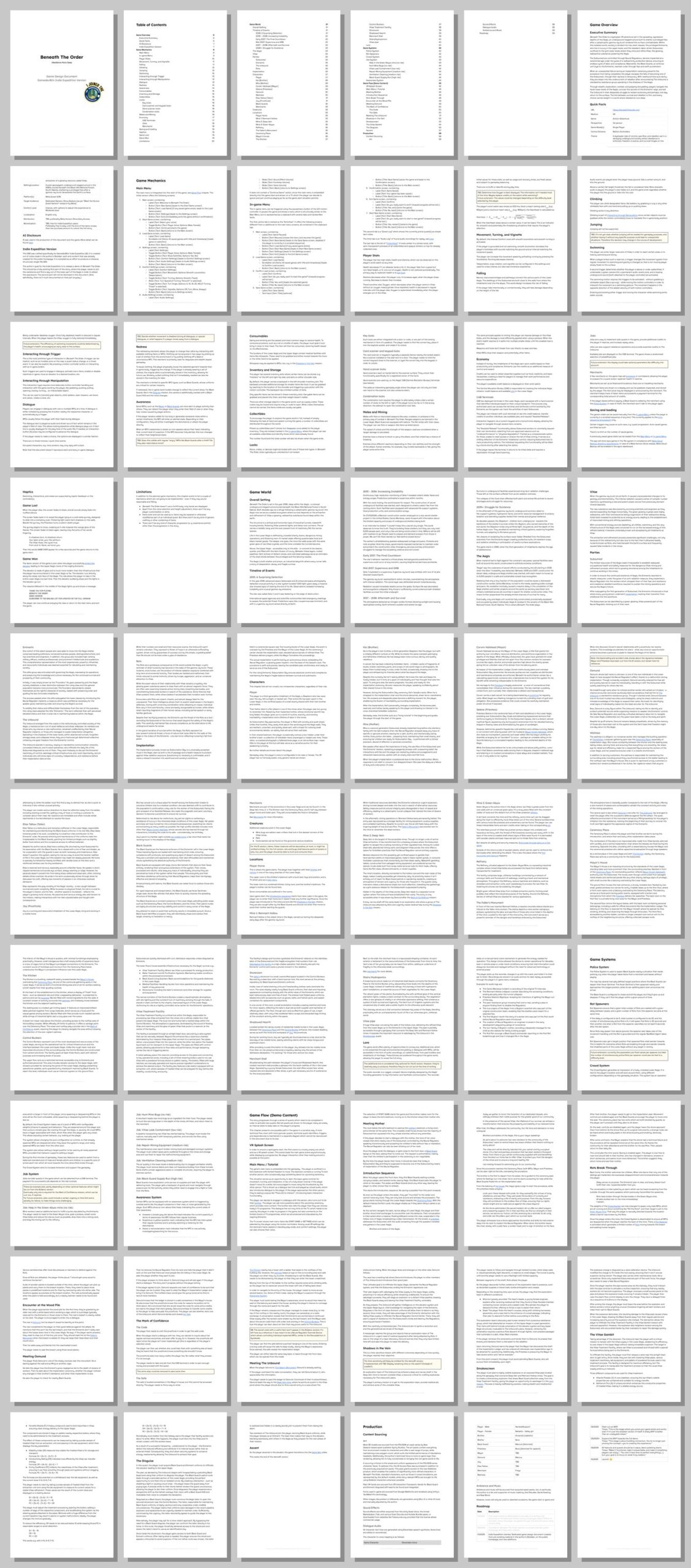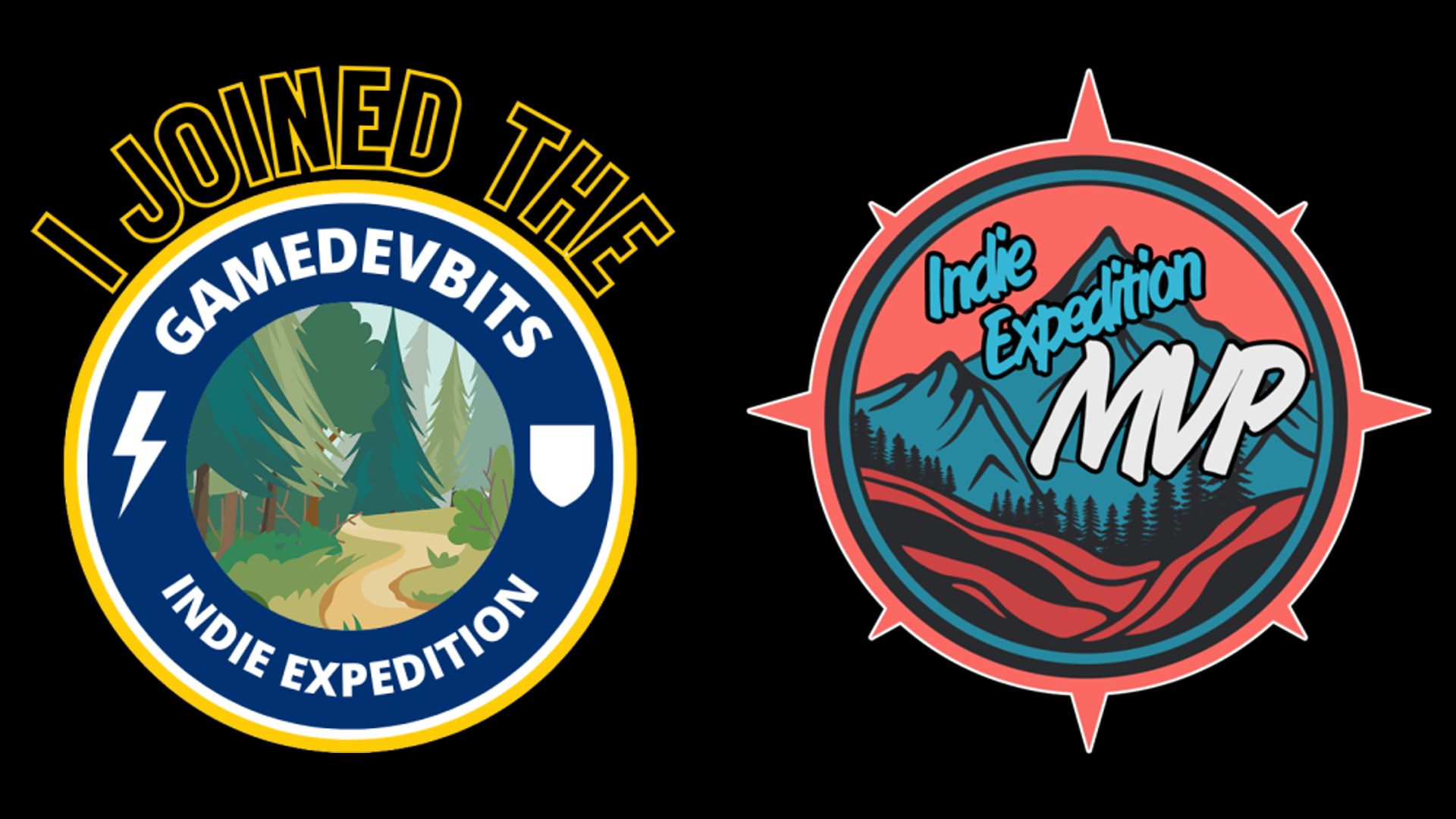As life goes, January was more eventful than planned and therefore less productive than hoped. I wanted to do much more for the game and much more for other obligations that I had taken on.
Indie Expedition
On January 2nd, fueled with New Year’s resolutions, I joined an initiative by Timps at GameDevBits: the Indie Expedition. It’s a group of hobbyists who committed to releasing their games on December 1st, 2025. Timps created badges for those who wanted to pledge publicly, and so I did. On his Discord, on my Bluesky account, and now here:

I joined the #GamedevBits #IndieExpedition. I’m going to release my indie game on December 1st, 2025. It’s go time!
Demo scope
Disclaimer: I scoped my release down to a demo version of Beneath The Order.
What does that mean? The game starts in the Lower Aegis, and as the story progresses, the player learns about the game world, the society, and how their community of Subsumed is exploited by the powerful leaders, the Eminents. At some point, the player will depart from the Lower Aegis to fight the Eminents in their luxurious Upper Aegis. The story to this point will be covered by what I’m planning to release on December 1st. I hope that it will not just be a fully playable demo, with a great atmosphere and all the mechanics in place, but also end with a nice cliffhanger which leaves the player keen to learn how the story will end.
This scope felt realistic and manageable early January. I’ve got some doubts today, mid February. But no risk, no fun!
First Indie Expedition artifacts
The first stage from January 10th to January 26th was creating various documentation artifacts, from a short summary to a full game design document. I’ve never written a GDD before and I’m not a fan of putting creative content to paper – it’s going to change anyway. But the exercise was a fantastic opportunity for me to turn some abstract ideas into something more concrete, to verify if things made sense in combination, and to get a better idea of the work necessary.
I had a lot of text already created for the homepage and also stored in my personal Obsidian vault, but plenty of other things had to be written down from scratch. As always, I used ChatGPT as a sparring partner, which accelerated the process.
In the process, I identified some things I had not considered; but more importantly, I removed plenty.
Here’s a condensed version of the final version for the Indie Expedition:

With the paperwork done, I have now entered the next phase: building an MVP.

I’ve finished my game planning from the #IndieExpedition and now I’m building an MVP. I’m releasing a game this year.
Vitae Treatment Facility and Swimming
Swimming was a mechanic I wanted to build for quite a while. The mining operations led to several natural and artificial Vitae ponds, and sometimes the player needs to jump right in and swim.
Here’s a first version, recorded in the Vitae Treatment Facility, a room I built down in the Control Bunkers of the Lower Aegis. In this location, the primary purpose of swimming is to hide from NPCs entering the room:
The various machines in the room will be used for a quest which I have yet to build.
In-game menu
The MVP scope forced me to think about an in-game menu, too. I already had the starting menu in place, but since it was bound to a specific location, it wouldn’t work in-game. I had to think of an alternative.
Initially, I wanted to use a notepad as an in-game menu. I had also documented it accordingly in my GDD. But no plan survives the contact with reality, right? It turned out that I neither had a model which was detailed enough to work as an in-game menu – you’re holding this low poly object right in front of your virtual face, the camera, so it needs a bit of detail -, nor did the content work as I had described it originally.
In need for an alternative, I looked through the Menus section of the XR UI reference library, a page someone recommended to me a while ago. Here, the in-game menu of “Garden of the Sea” caught my eye: a book with buttons which look like sticker notes. I could use something like that in my game, too, provided I had a good book model.
And luckily, this time I found something detailed enough. I started rigging the book because I wanted to have a “book open” animation when the in-game menu was activated; I also rigged pages because I wanted to have a page turn animation, too. Then I laid out my menu screens across various game objects and built the logic to make the menu appear, toggle the content, and trigger page turns where applicable.
Here’s the current version:
It’s still a flat canvas and this can be seen at the borders, but it’s good enough for now.
The tabs on the top are particularly interesting and – partially – something new that came out of the game design document writing. I’m not going to share what the two right ones are just yet… but we’ll get there, eventually.
Instead, I started building the most basic in-game menu functions, like basic options, resuming the game, or quitting the game. Save and load are not yet working.
Résumé
That’s it for January. In February, I’m going to continue working on the menu and on the intro and quests, because that’s a goal I set myself for the MVP: a quest arc from beginning of the game to finishing a certain quest. Keep your fingers crossed for me!

Leave a Reply